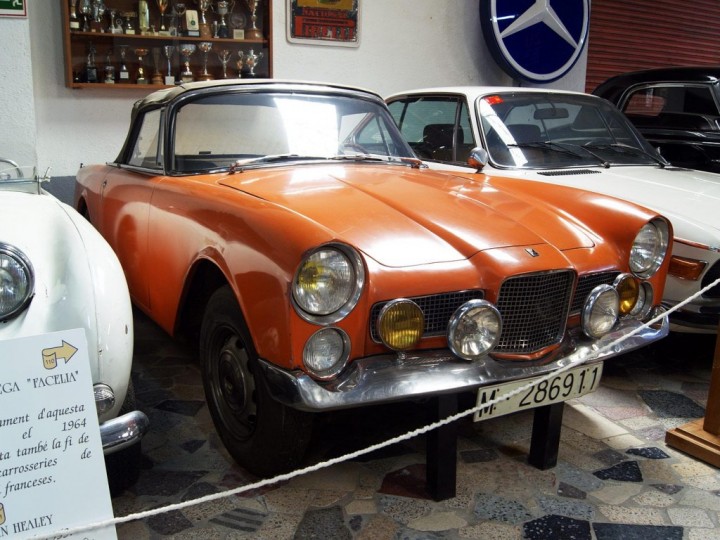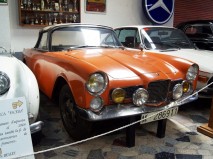1964 Facel Vega Facellia
In 1960, Facel entered the sports car market with the Facellia, a small car similar in size to the then popular Mercedes 190SL. Facellias were advertised in three body styles: cabriolet, 2+2 coupe and 4-seat coupe — all with the same mechanicals and a 2,450 mm (96.5 in) wheelbase. Styling was similar to the Facel HK500, but with rather elegant (though fingernail-breaking) flush door handles. Following Facel Vega's demise several of M Daninos's styling cues were "borrowed" by Mercedes-Benz. Prices were roughly US$4,000 for the Facellia, US$5,500 for the Facel III and US$6,000 for the Facel 6.
With the idea of creating a mass-produced all-French sports car competing with the Alfa Romeos, Facel moved away from American engines. The Facellia had a 4-cylinder 1.6 L DOHC engine built in France by Paul Cavallier of the Pont-a-Mousson company (which already provided manual gear boxes for the company's larger models). The engine had only two bearings supporting each camshaft, using special steels, as opposed to the usual four or five. Despite the metallurgical experience of Pont-a-Mousson, this resulted in excessive flex, timing problems and frequent failures. The engine was pronounced a disaster and the Facellia with it. Company president, Jean Daninos having been obliged to resign in August 1961 in response to the company's financial problems, the new boss, a former oil company executive called Andre Belin, gave strict instructions to the after-sales department to respond to customer complaints about broken Facellia engines by replacing the units free of charge without creating "difficulties". The strategy was intended to restore confidence among the company's customer base. It would certainly have created a large hole in the income statement under the "warranty costs" heading, but it may have been too late for customer confidence.
The troublesome engine was replaced with a Volvo B18 powerplant in the Facel III, but the damage was done. Production was stopped in 1963 and despite the vision of it being a "volume" car only 1100 were produced, which is Facel's highest production number. Facel lost money on every car they built, the luxury car side of the company being supported entirely by the other work done by Facel Metallon, Jean Daninos's obsession being very similar to that of David Brown of Aston Martin.
The small Facellia met with little success and the losses from this, due to strong competition at the luxury end of the market, killed off the company. Facel left the car market completely in 1964. What was, according to some, the best small Facel, the Facel 6, which used an Austin Healey 2.8-litre engine, came too late to save the company, fewer than 30 having been produced when the French government scuttled the endeavour.








